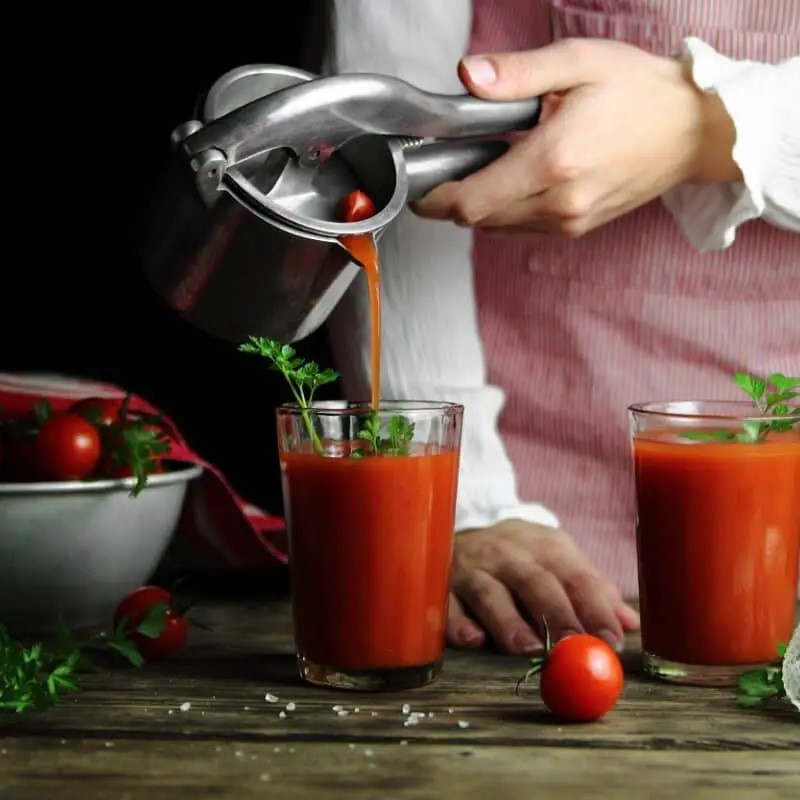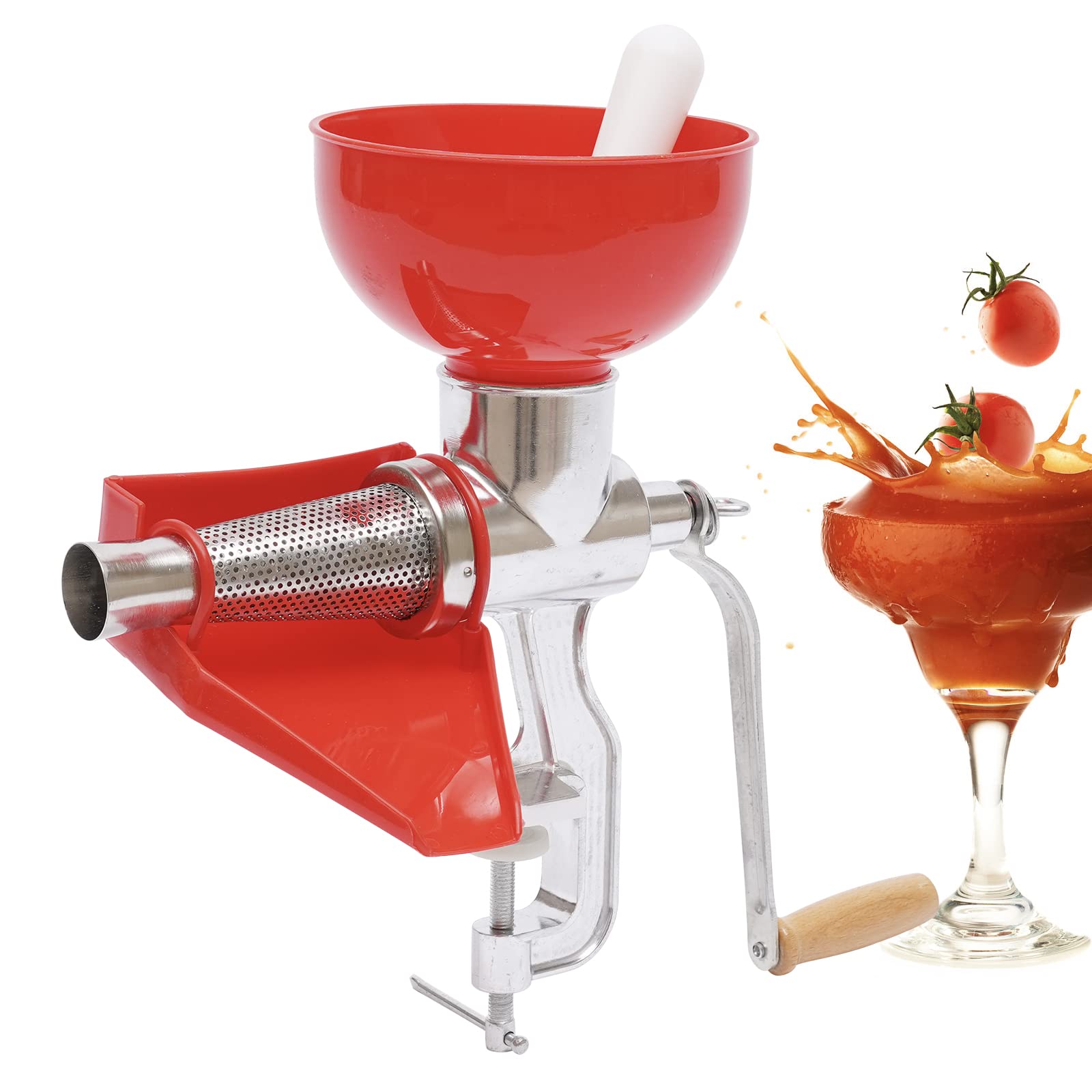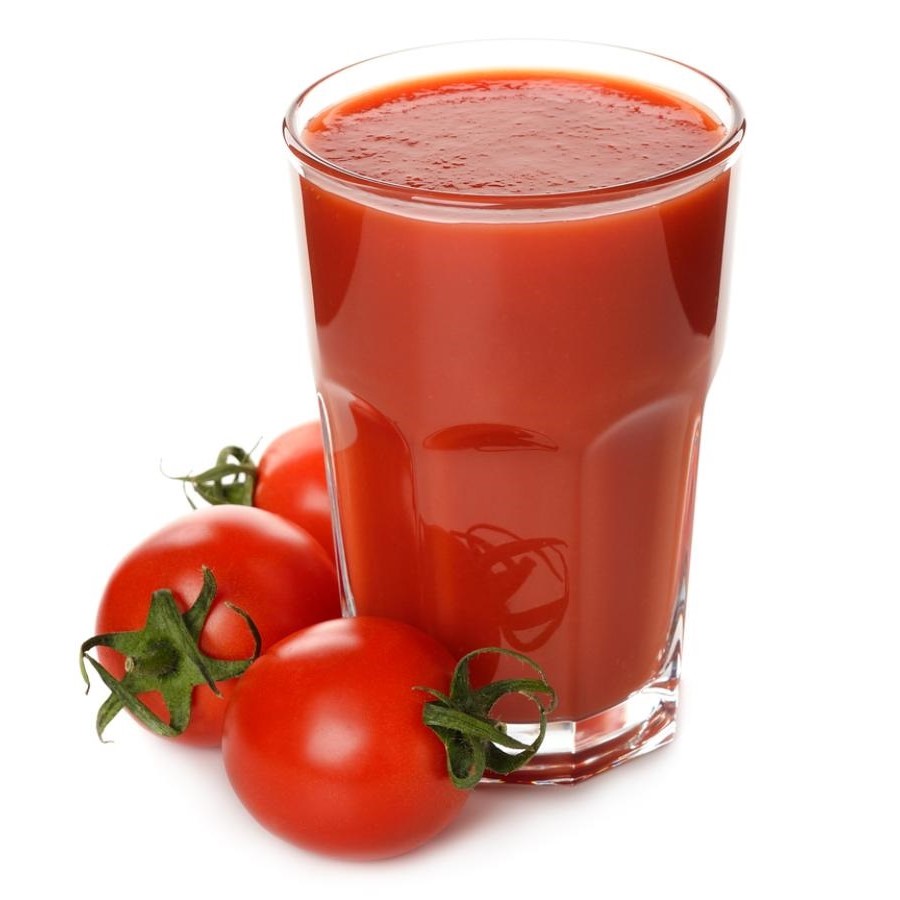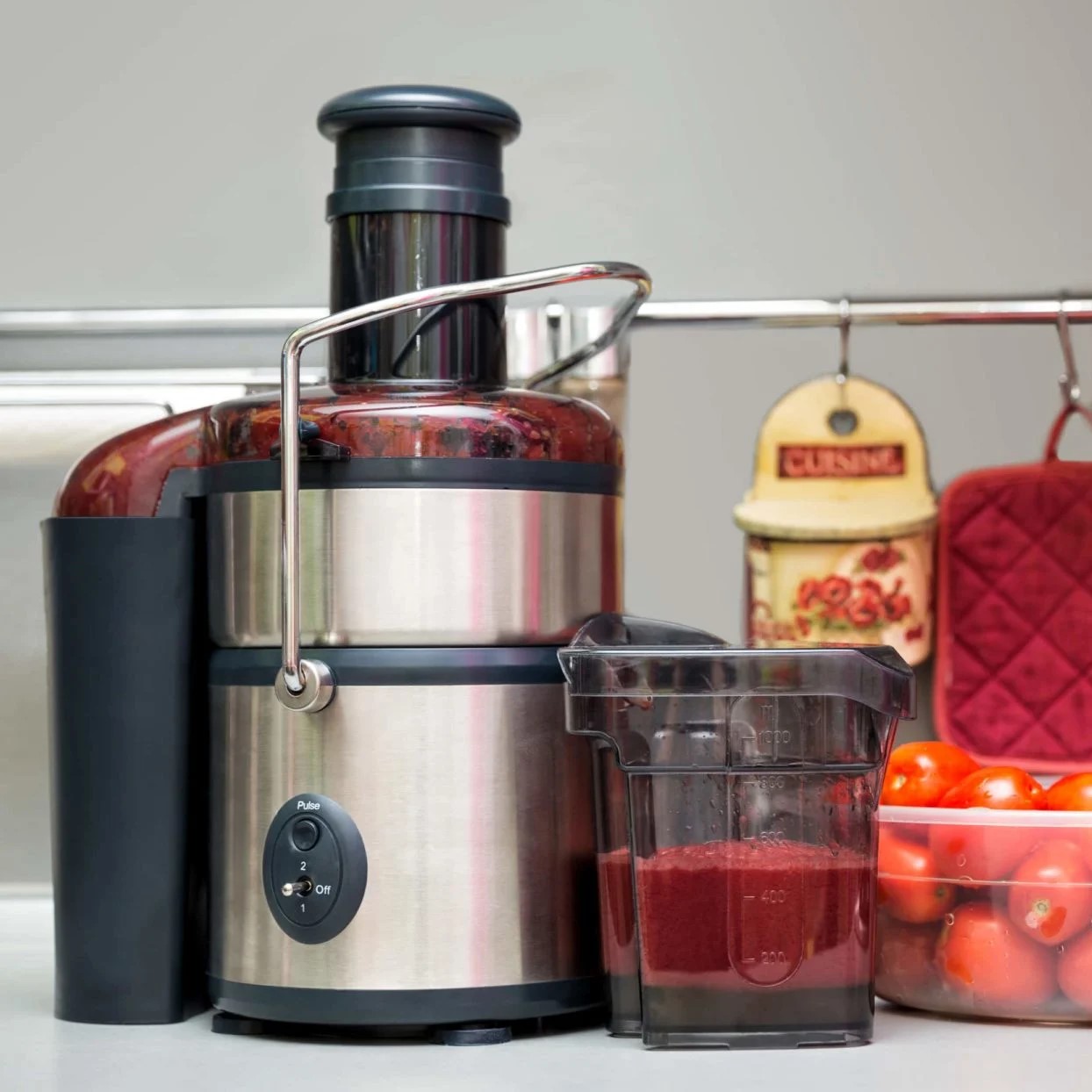
Juicing tomatoes is a fantastic way to incorporate fresh, nutrient-rich flavors into your diet. However, many wonder, can tomatoes be juiced in a juicer? The answer is a resounding yes, and using a dedicated tomato juicer can enhance the efficiency and quality of your juice. In this comprehensive guide, we will delve into the benefits of using a tomato juicer, the different types available, tips for juicing tomatoes effectively, and everything you need to know to make the most out of your juicing experience.
 The Benefits of Using a Juicer for Tomato
The Benefits of Using a Juicer for Tomato
Choosing the right tomato juicer can significantly impact the taste, texture, and nutritional value of your homemade tomato juice. But why should you opt for a specialized juicer instead of a general one? Let’s explore the key benefits.
Superior Juice Quality
A tomato juicer is specifically designed to handle the unique properties of tomatoes, which are both watery and delicate. Unlike traditional juicers, tomato juicers efficiently extract juice without introducing excess pulp or froth, ensuring a smooth and rich flavor every time. This results in a more enjoyable drinking experience, free from unwanted bitterness or overpowering textures.
Enhanced Nutrient Retention
Tomatoes are packed with essential vitamins, antioxidants, and minerals that are best preserved through proper juicing techniques. Using a dedicated tomato juicer minimizes heat generation and oxidation, which can degrade nutrients. Consequently, you retain more of the beneficial compounds like lycopene and vitamin C, making your juice not only delicious but also highly nutritious.
Versatility and Ease of Use
Modern tomato juicers come equipped with intuitive features that make the juicing process straightforward and hassle-free. With adjustable settings, you can control the consistency of your juice, whether you prefer it thick and pulpy or light and smooth. Moreover, many models are easy to clean, ensuring that maintenance is quick and efficient, encouraging regular use without the burden of complicated upkeep.
Types of Juicers for Tomato
When considering a tomato juicer, it’s essential to understand the various types available in the market. Each type offers unique advantages tailored to different preferences and needs.
Manual Tomato Juicers
Manual tomato juicers are perfect for those who prefer a hands-on approach to juicing. These devices typically involve squeezing or pressing the tomatoes to extract juice manually. While they require more effort, manual juicers are often more affordable and don’t require electricity, making them an excellent choice for simple, small-scale juicing tasks.
Handheld Citrus Presses
Handheld citrus presses can also be adapted for juicing smaller tomatoes. They offer a convenient and portable option for those who occasionally make tomato juice without the need for larger equipment. However, they are best suited for smaller quantities and may not be as efficient for handling larger batches.
Electric Tomato Juicers
Electric tomato juicers provide a more efficient and effortless way to extract juice from tomatoes. They are equipped with powerful motors and specialized mechanisms that ensure thorough juicing with minimal manual input. This type is ideal for individuals who regularly consume tomato juice and seek a reliable, high-performance appliance.
Centrifugal Juicers
Centrifugal juicers are among the most common electric models used for juicing tomatoes. These juicers operate by spinning at high speeds to separate juice from pulp through centrifugal force. While effective, they may introduce a slight froth and can sometimes struggle with very thick or fibrous tomato varieties.
Masticating Juicers
Masticating juicers utilize a slow, grinding motion to extract juice, which is particularly beneficial for tomatoes. This gentle process ensures maximum juice yield and preserves the delicate flavors and nutrients of the tomatoes. Additionally, masticating juicers produce less heat and oxidation, resulting in longer-lasting, fresher-tasting juice.
Specialty Tomato Juicers
Specialty tomato juicers are designed explicitly for the unique needs of tomato processing. These juicers often feature adjustable meshes and settings that cater specifically to the shape, size, and juiciness of tomatoes, providing the ultimate precision and control for optimal juice extraction.
 How to Choose the Best Juicer for Tomato
How to Choose the Best Juicer for Tomato
Selecting the right tomato juicer involves evaluating several key factors to ensure that the appliance aligns with your juicing habits and preferences.
Capacity and Size
Assess your juicing needs by considering the capacity of the juicer. If you frequently make large batches of tomato juice, opt for a model with a higher capacity to handle more tomatoes at once. Conversely, if you only occasionally juice tomatoes, a smaller, more compact juicer may be sufficient and easier to store.
Ease of Cleaning
A major consideration when choosing a tomato juicer is how easy it is to clean. Look for models with detachable parts that can be easily rinsed or placed in a dishwasher. Additionally, designs that minimize the number of components and have smooth surfaces can simplify the cleaning process, saving you time and effort.
Noise Level
Consider the noise level of the juicer, especially if you plan to use it early in the morning or late at night. Electric models like centrifugal and masticating juicers can vary in terms of loudness, so choosing a quieter model can enhance your overall juicing experience, making it more pleasant and less disruptive to your household.
Price and Budget
Set a budget that reflects your juicing frequency and desired features. Manual juicers are generally more affordable, while electric and specialty models can be pricier but offer enhanced efficiency and functionalities. Determine what you are willing to invest in a tomato juicer and select a model that offers the best value within your price range.
Brand Reputation and Warranty
Opt for brands with a strong reputation for quality and customer satisfaction. Reputable manufacturers often provide better product reliability and customer support. Additionally, check for warranties that protect your investment, ensuring that you are covered in case of any defects or malfunctions.
 Tips for Juicing Tomatoes Effectively
Tips for Juicing Tomatoes Effectively
Maximizing the efficiency and quality of your tomato juice involves adopting certain best practices and techniques. Follow these tips to ensure that every glass of juice is as flavorful and nutritious as possible.
Choose Ripe, Fresh Tomatoes
The quality of your juice starts with the tomatoes themselves. Select ripe, fresh tomatoes that are firm and free from blemishes or bruises. Heirloom varieties, with their rich flavors, are excellent choices for juicing, providing a more robust and nuanced taste compared to standard varieties.
Prep Your Tomatoes Properly
Proper preparation is essential for effective juicing. Start by washing the tomatoes thoroughly to remove any dirt or pesticides. Remove the stems and any blemished areas to ensure a cleaner juice. Cut the tomatoes into smaller pieces if necessary, facilitating easier processing in your tomato juicer.
Control the Pulp
Managing the pulp in your juice can significantly influence the texture and consistency. Adjust the settings on your tomato juicer to achieve your desired level of pulp. For a smoother juice, opt for finer settings, while if you prefer a bit more texture, choose coarser settings.
Experiment with Flavors
Enhance your tomato juice by experimenting with various flavor additions. Consider adding ingredients like basil, garlic, or a splash of lemon juice to create unique and refreshing blends. Additionally, mixing tomato juice with other vegetable or fruit juices can diversify your flavor profile and boost nutritional value.
Store Your Juice Correctly
Proper storage is crucial for maintaining the freshness and nutritional benefits of your tomato juice. Store freshly made juice in airtight containers in the refrigerator and consume it within a few days to ensure optimal flavor and quality. Avoid leaving the juice exposed to air for prolonged periods, which can lead to oxidation and nutrient loss.
Maintenance and Cleaning of Your Juicer for Tomato
Keeping your tomato juicer in top condition requires regular maintenance and proper cleaning practices. Implementing these steps ensures that your appliance remains efficient and lasts longer.
Clean After Every Use
Immediate cleaning after each use prevents the buildup of tomato residue, which can lead to odors and bacterial growth. Disassemble the juicer according to the manufacturer’s instructions and rinse all removable parts thoroughly under running water. For stubborn residues, use a soft brush or sponge to gently remove any remaining bits.
Deep Clean Periodically
In addition to regular cleaning, perform a deep clean of your tomato juicer periodically to maintain its performance. Use vinegar or lemon juice to descale the appliance and eliminate any persistent smells or stains. Follow the manufacturer’s guidelines for deep cleaning to avoid damaging any components.
Inspect for Wear and Tear
Regularly inspect your tomato juicer for any signs of wear and tear, such as loose parts or worn blades. Addressing these issues promptly can prevent further damage and ensure that your juicer continues to operate smoothly. Replace any damaged or worn components as needed to maintain optimal performance.
Store Properly
Store your tomato juicer in a clean, dry place to protect it from dust and moisture. Use protective covers or cases if available, especially if you have limited storage space or need to transport the juicer frequently.
 Frequently Asked Questions About Juicers for Tomato
Frequently Asked Questions About Juicers for Tomato
To further assist you in understanding tomato juicers, here are answers to some commonly asked questions.
Can I Juice Whole Tomatoes in a Tomato Juicer?
Yes, you can juice whole tomatoes in a tomato juicer. These juicers are designed to handle entire tomatoes, breaking them down efficiently to extract maximum juice. Ensure that you follow the manufacturer’s instructions regarding portion sizes and preparation to achieve the best results.
How Do I Prevent Seeds and Skin from Getting into the Juice?
Most soft ice cream makers are designed with removable filters or strainers that help trap seeds and skin. Rinse the tomatoes thoroughly before juicing to reduce the amount of seed and skin residue. Additionally, some tomato juicers come with settings that allow you to control the level of pulp, ensuring a smoother juice with fewer seeds and skin particles.
What Is the Best Type of Tomato for Juicing?
The best type of tomato for juicing is typically a variety that is meaty and has a high juice content. Roma tomatoes and heirloom varieties are excellent choices due to their rich flavor and minimal seed content. Cherry tomatoes can also be used for sweeter juice variations.
Can I Clean My Tomato Juicer in the Dishwasher?
It depends on the model of your tomato juicer. Check the manufacturer’s instructions to determine if the detachable parts are dishwasher-safe. If they are, place them on the top rack to prevent damage.
How Often Should I Replace My Tomato Juicer’s Blades?
Blade replacement depends on the frequency of use and the type of blades. Generally, leather blades may need to be replaced every 6 to 12 months, while plastic blades can last up to two years. Inspect the blades regularly for signs of wear, such as dullness or chipping, and replace them as needed to maintain optimal juicing performance.
Future Trends in Juicers for Tomato
As technology evolves, tomato juicers continue to innovate, offering enhanced features and improved performance. Here are some emerging trends to watch for in the future of tomato juicing technology.
Smart Connectivity
Future models of tomato juicers are expected to integrate smart technologies, including app connectivity and programmable settings. These advancements allow users to control their juicers remotely, monitor juice extraction levels, and customize their juicing preferences through smartphone applications.
Enhanced Motor Efficiency
Advancements in motor technology are making tomato juicers more efficient and quieter. Modern juicers feature motors that not only reduce noise but also optimize energy consumption, ensuring that juicing is both effective and eco-friendly.
Multifunctional Appliances
Next-generation tomato juicers are likely to combine multiple functions, such as blending, grinding, and juicing, into a single appliance. This versatility provides users with a comprehensive kitchen tool that can handle a variety of food preparation tasks, making it even more valuable and space-saving.
Improved Safety Features
Safety innovations in tomato juicers include automatic shut-off mechanisms, blade guards, and anti-slip bases. These features enhance user safety, preventing accidents and ensuring a secure juicing experience, especially for households with children.
 Conclusion
Conclusion
In conclusion, a soft ice cream maker may seem unrelated, but it underscores the importance of efficiency and precision—principles that equally apply to tomato juicing. Using a tomato juicer not only enhances the quality and flavor of your juice but also streamlines your kitchen tasks, offering convenience and health benefits. By understanding the benefits, choosing the right model, and following best practices, you can elevate your juicing experience and enjoy fresh, delicious tomato juice every day.